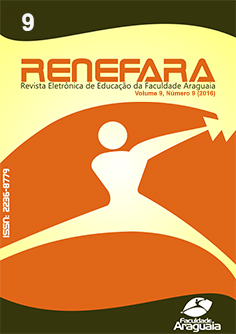ANÁLISE DO USO DE RESÍDUOS DA CONSTRUÇÃO CIVIL COMO AGREGADO MIÚDO EM PAVIMENTAÇÃO
Keywords:
pavimentação, resíduo, sub-baseAbstract
Analisar misturas de solo com adições de Resíduos da Construção Civil (RCC) visando o seu aproveitamento na pavimentação rodoviária é meta relevante na configuração tecnológica atual, visto que essa atividade absorve grandes quantidades de insumos. Nesta pesquisa, analisa-se três misturas de solo-RCC, sendo: 100% solo; 30% RCC + 70% solo; e 50% RCC + 50% solo. Foram ensaiados somente osmateriais na fração miúda (passante na peneira nº 4). Como trabalho experimental, foram realizados ensaios de caracterização física dos materiais e caracterização mecânica das amostras através do Índice de Suporte Califórnia (ISC) com medição de expansão, que expuseram a qualidade e a potencialidade de cada mistura. Conclui-se com os resultados laboratoriais a adequação da amostra de 50% RCC + 50% solo em sub-base de pavimentos de acordo com a NBR ABNT 15.115 (2004)
Downloads
Published
Issue
Section
License
The copyright of the published articles will be transferred to the Uniaaraguaia Magazine, allowing its subsequent reproduction as transcription and with due citation of source. In the event of acceptance and before the publication of the article, the plaintiff (s) shall write a statement formally transferring copyright to the magazine.
The author may also print and distribute copies of his article, provided that he mentions that the rights belong to the Uniaaraguaia Magazine.
Author rights include the right to reproduce in full or partly by any means, distribute this article, including figures and photographs.
By submitting originals to the Uniaaraguaia magazine, the author or authors express agreement with the following terms:
a) Authors maintain copyright and grant Uniaraguaia magazine the right of first publication, with the work simultaneously licensed under the Creative Commons Attribution license that allows the sharing of work with recognition of the authorship and initial publication in this magazine.
b) Authors are authorized to assume additional contracts separately, for non-expiration distribution of the work version published in this magazine (eg publish in institutional repository or as book chapter), with recognition of authorship and initial publication in this journal.
c) Authors are allowed and are encouraged to publish and distribute their work online (eg in institutional repositories or on their personal page) to any point before or during the editorial process, as this can generate productive changes as well as increase the impact and citation of published work.

